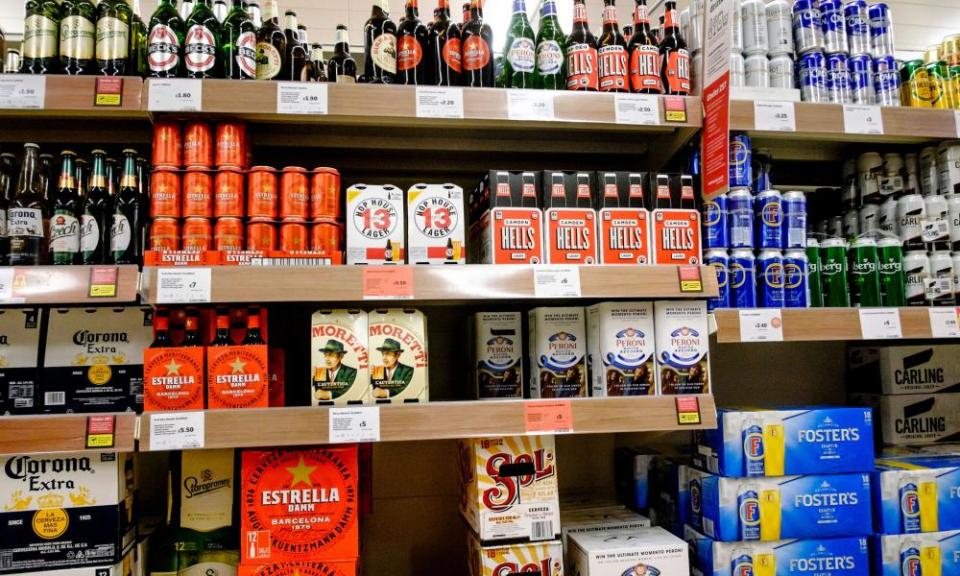Britain’s drinking deaths rose at record rate in pandemic

Official figures show deaths increased nearly 19% in 2020 as Public Health England notes changing consumption patterns
Britain’s lockdown drinking habits may have had fatal consequences. Deaths caused by alcohol in 2020 increased by almost 19%, marking the biggest rise since records began, according to the Office for National Statistics.
There were 8,974 deaths from alcohol specific causes registered in the 12 month period, up from 7,565 deaths in 2019 – the highest year-on-year increase since the data series began in 2001. It bucks a trend in which fatalities from alcohol remained stable for the previous seven years.
In England, the number of people drinking more than 14 units a week increased after the first national lockdown, according to surveys by Public Health England (PHE), and has remained at similar levels since. As pubs shut, drinking at home soared, with off-licence sales of beer rising 31% and spirits 26% compared with 2019.
Dr James Tucker, the head of the government’s data quality hub, said: “There will be many complex factors behind the elevated risk since spring 2020.
“For instance, Public Health England analysis has shown consumption patterns have changed since the onset of the coronavirus pandemic, which could have led to hospital admissions and ultimately deaths. We’ve seen increases in loneliness, depression and anxiety during the pandemic and these could also be factors. However, it will be some time before we fully understand the impact of all of these.”
Close to eight out of 10 of the deaths were from alcoholic liver disease and although alcohol-related cirrhosis can take a decade or more to develop, most deaths occur as a result of acute-on-chronic liver failure owing to recent alcohol intake, a PHE study in July found.
Scotland and Northern Ireland continued to have the highest rates of alcohol deaths, but the fastest rises were in Wales and England. The sharpest rise in deaths in England was in the West Midlands, followed by the south-west and London. Nearly twice as many men died as women, which is consistent with previous years.
“The harm caused by alcohol goes beyond this unacceptable, avoidable loss of life,” said Dr Richard Piper, the chief executive of the charity Alcohol Change UK, which is calling for minimum unit pricing. “Millions more suffer from worsened mental and physical health every day as a result of harmful drinking.”
Referring to the government’s unveiling on Monday of a new drug strategy, Sir Ian Gilmore, the chair of the Alcohol Health Alliance, said: “[We] fail to understand their complacency on this other drug of dependence, alcohol.”
He added: “Our poorest communities suffer most from alcohol harm, and so if our prime minister is serious about ‘levelling up’ he must back the robust plans for drugs with an alcohol strategy that seeks to turn this tragic trend around.”
The threat of liver disease had been growing before the pandemic. For example, liver mortality rates in England increased 43% between 2001 and 2019, to the extent that liver disease became the second leading disease causing premature death among people of working age, according to PHE. Previous studies have shown that while there was an increase in the number of people abstaining from alcohol, in the early months of lockdown people with problem drinking either increased their intake or broke a dry period.
The picture for smoking is less certain. Official statistics released on Tuesday showed a drop in smoking from 14% of over-18s in the first three months of 2020 to 12% for the rest of the year.
However, statisticians cautioned this was “implausible” and highlighted a change to the survey method from face-to-face to phone. Another survey, of over-16s, which did not change its methodology, found a statistically insignificant decrease in smoking in Great Britain, from 15.8% in 2019 to 14.5% in 2020.

 Yahoo Finance
Yahoo Finance 